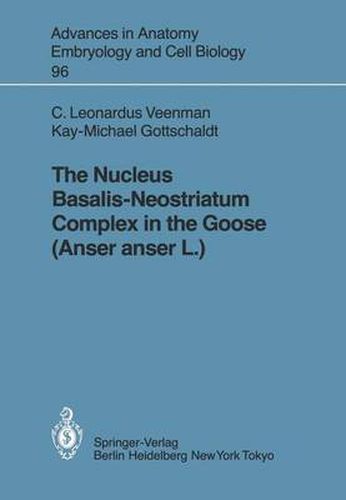Readings Newsletter
Become a Readings Member to make your shopping experience even easier.
Sign in or sign up for free!
You’re not far away from qualifying for FREE standard shipping within Australia
You’ve qualified for FREE standard shipping within Australia
The cart is loading…






This title is printed to order. This book may have been self-published. If so, we cannot guarantee the quality of the content. In the main most books will have gone through the editing process however some may not. We therefore suggest that you be aware of this before ordering this book. If in doubt check either the author or publisher’s details as we are unable to accept any returns unless they are faulty. Please contact us if you have any questions.
In birds, the beak is the most important organ for manipulative actions: its manipulative capabilities vary as much as those of the forepaws and snouts of mammals. For the peripheral parts and at brainstem levels, the sensorimotor circuit of the avian oral region is roughly similar to the mammalian, but is strikingly different at higher levels of the central nervous system (CNS) (Ariens- Kappers et al. 1936). Our field of interest is the organization of the telencephalic areas involved in the manipulative actions of the bill. The goose was chosen as a subject because of the extensive development of the tactile system of the oral region. The mechanoreceptors in the lower and upper beak are innervated by the trigeminal nerve (Cords 1904; Berkhoudt 1980), while the tongue is innervated by branches of the glossopharyngeal and hypoglossal nerves (Cords 1904). In the ganglion semilunare, the perikarya of the fibers of the trigeminal nerve are separated into a distinct ophthalmic population, and two mutually overlap- ping maxillary and mandibulary populations (Dubbeldam and Veenman 1978; Noden 1980). In duck and cockatoo both the glossopharyngeal nerve and trige- minal nerve relay in the metencephalic principal sensory nucleus of the trige- minal nerve (PrV) (Dubbeldam et al. 1979; Dubbeldam 1980; Wild 1981). In PrY the three trigeminal branches are represented in an overlapping dorsoventral sequence (Zeigler and Witkovsky 1968; Dubbeldam and Karten 1978).
$9.00 standard shipping within Australia
FREE standard shipping within Australia for orders over $100.00
Express & International shipping calculated at checkout
This title is printed to order. This book may have been self-published. If so, we cannot guarantee the quality of the content. In the main most books will have gone through the editing process however some may not. We therefore suggest that you be aware of this before ordering this book. If in doubt check either the author or publisher’s details as we are unable to accept any returns unless they are faulty. Please contact us if you have any questions.
In birds, the beak is the most important organ for manipulative actions: its manipulative capabilities vary as much as those of the forepaws and snouts of mammals. For the peripheral parts and at brainstem levels, the sensorimotor circuit of the avian oral region is roughly similar to the mammalian, but is strikingly different at higher levels of the central nervous system (CNS) (Ariens- Kappers et al. 1936). Our field of interest is the organization of the telencephalic areas involved in the manipulative actions of the bill. The goose was chosen as a subject because of the extensive development of the tactile system of the oral region. The mechanoreceptors in the lower and upper beak are innervated by the trigeminal nerve (Cords 1904; Berkhoudt 1980), while the tongue is innervated by branches of the glossopharyngeal and hypoglossal nerves (Cords 1904). In the ganglion semilunare, the perikarya of the fibers of the trigeminal nerve are separated into a distinct ophthalmic population, and two mutually overlap- ping maxillary and mandibulary populations (Dubbeldam and Veenman 1978; Noden 1980). In duck and cockatoo both the glossopharyngeal nerve and trige- minal nerve relay in the metencephalic principal sensory nucleus of the trige- minal nerve (PrV) (Dubbeldam et al. 1979; Dubbeldam 1980; Wild 1981). In PrY the three trigeminal branches are represented in an overlapping dorsoventral sequence (Zeigler and Witkovsky 1968; Dubbeldam and Karten 1978).